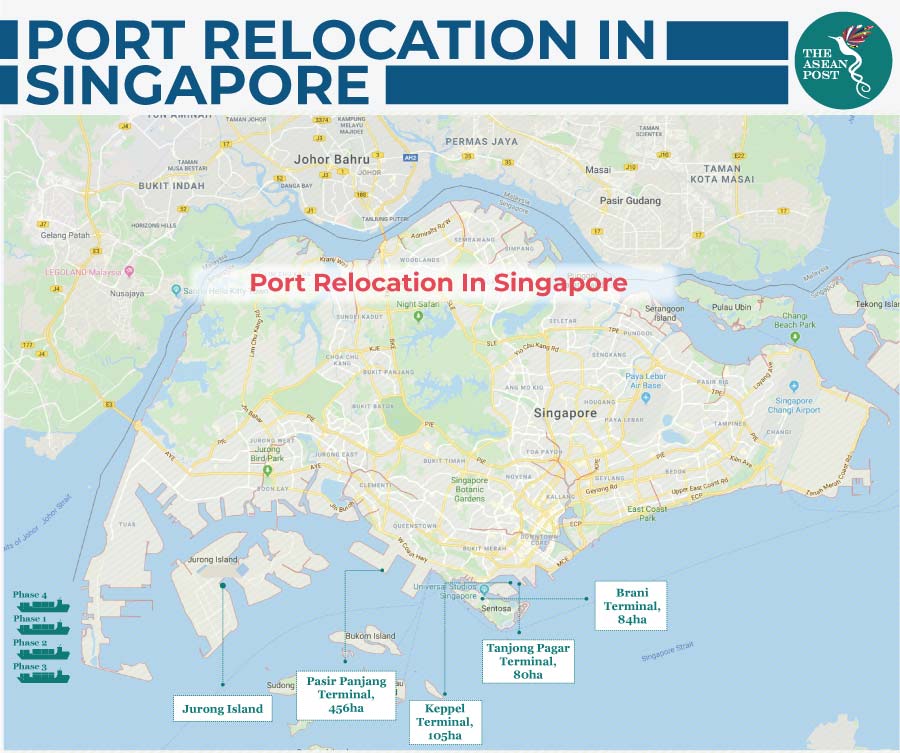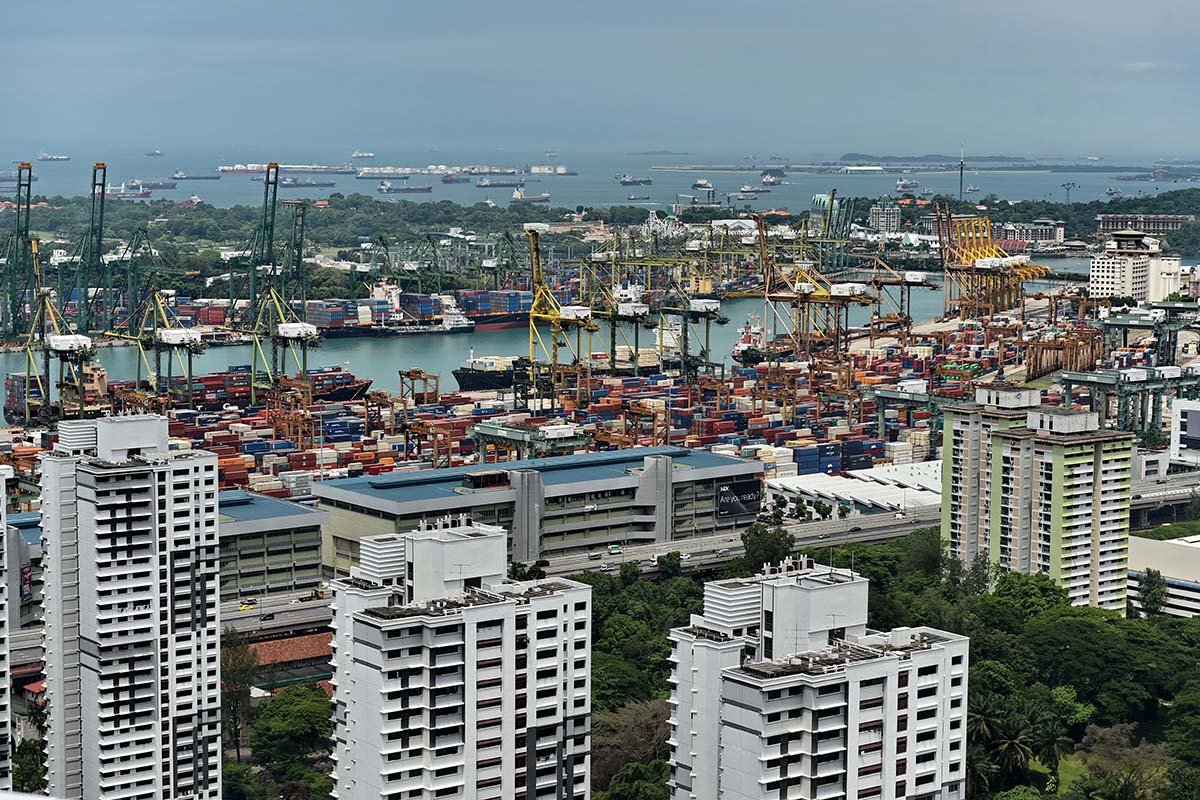Singapore Prime Minister, Lee Hsien Loong announced in his annual National Day address in 2013 that the Singaporean government will be relocating its existing port operations to a new location in Tuas by 2027. This relocation is expected to free up land in Tanjong Pagar where the current port is located.
According to The Straits Times, the Tanjong Pagar Terminal served as an important port for the island nation over the past 45 years and had contributed greatly towards the development of Singapore as a regional hub and a global port city. Its lease will be coming to an end by 2027.
The leases on the neighbouring Keppel and Brani Terminals also expire in 2027.
The new port development in Tuas will be divided into four phases. Currently, reclamation work is ongoing for two out of four phases of the development while more than three kilometres of caisson has already been installed to form the wharf.
Phase 1 of the new port project will be built on a 8.6 kilometres caisson which will serve as a foundation to facilitate port operations while maintaining Singapore's status as a global port amid rising competition within the region. The caisson, which sits on a foundation on the seabed, is a 28 metre-high concrete watertight structure. It is about the height of a 10-storey housing board block. It is a faster method of building the wharf structure compared to traditional methods like piling.

The Tuas mega port is expected to open in phases from 2021. Additionally, the new port will be twice the size of the Ang Mo Kio town – the third most populated residential town in Singapore that covers an area of 13.94 square kilometres. In order to optimise land usage, Singaporean authorities are even considering adding cafes, retail outlets and even a jogging track to the area. The MPA (Maritime and Port Authority of Singapore) is also planning to have other port-related businesses at the site.
The Straits Times also reported that the port will be able to handle up to 65 million standard containers of cargo a year, more than double what the existing port handled in 2017 when it is completed by 2040.
The land in Tanjong Pagar and Pasir Panjang that will be made available after the relocation will be redeveloped into a waterfront commercial and residential district. The Greater Southern Waterfront project will be a 1,000 hectare development three times the size of Marina Bay.
Desmond Sim, Head of CBRE Research for Singapore and South-east Asia, opined that the nation would benefit more if the land is set aside mixed developments. "It is a very prime piece of land, and we have to maximise the plot ratio. The last thing we need in land-scarce Singapore is for land to be zoned for use only in certain hours of the day,", he explained.
According to Reuters, the Singaporean government is also planning to add a fourth runway at the Changi Airport which will allow authorities to relocate its military airbase and free up 800 hectares of land in central Singapore for homes, factories and businesses. “This is how we can stay the hub in Southeast Asia and create many more opportunities for Singaporeans,” Lee said.
